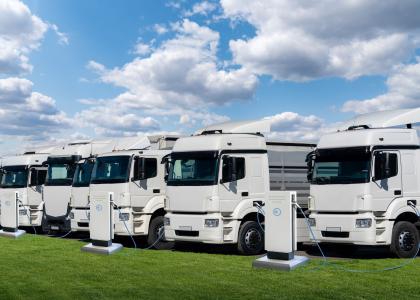From advanced data analytics and cybersecurity to artificial intelligence and blockchain, technology offers sweeping opportunities — and challenges — for energy efficiency. At our Summer Study on Energy Efficiency in Buildings next month, we will discuss these topics in a Monday plenary, sessions throughout the conference, and a tech-focused panel with more than two dozen speakers.
Register today - last day to avoid late fees!
Our “Smart Buildings, Smart Grid, and the Internet of Things (loT)” panel will extensively cover the space that ACEEE calls intelligent efficiency. For example, its speakers will explore smart home technologies, including window shades, HVAC and ventilation, and the cybersecurity implications of smart outlets. They will look at sub-metering loT, leveraging data to overcome skepticism that energy savings are real, and integrating connected loads to provide grid balancing.
Those are just a few highlights from Panel 12. To get a sneak peak, we discussed the topics and the sessions with panel co-chair Jessica Granderson, staff scientist in the Building Technology and Urban Systems Division at Lawrence Berkeley National Laboratory. Here are excerpts of our conversation with Granderson, who will also co-chair our next Summer Study Buildings in 2020.
Which topics on your panel interest you most and why?
Topics surrounding advanced controls and analytics. We're seeing increased prevalence of effective solutions that can materially impact smart buildings and grid interaction, and those solutions span today's products and services, as well as emerging techniques from the R&D community.
You will moderate a session that looks at blockchain. How significant a role might it play in energy efficiency?
Well, I think that's one question that we are all trying to figure out! Our Tuesday session will share two presenters' experiences and perspectives on where the benefits may and how they can be realized.
Your panel also explores smart outlets and thermostats. What risks might they pose to privacy and cybersecurity?
These devices collect information on resolved space occupancy and device usage, entailing details about individual or family preferences, behaviors, and habits. As we have seen, most recently in the social networking context, such information can potentially be used for far different purposes than the user intends or is perhaps aware of. Along with this, the connected nature of these systems opens risks surrounding cybersecurity and raises questions about whether sufficient protections are put in place and maintained.
What are the biggest challenges ahead for smart buildings and a smart grid?
Connectivity and integration are enormous, multifaceted challenges that we are grappling with. Data and communications integration, control integration across end uses and devices, services integration ... we could go on. Each of these presents tremendous opportunity for advances in smart buildings and smart gird.
Which smart features will most buildings have in 10 years that they don’t have now?
Assuming that we see more rapid advances in the next 10 years than we did in the past 10 years, we might see features such as location, time, and space resolved occupancy sensing, which can support more aggressive "sleep mode" operation and building- and occupant-customized space conditioning. As distributed energy resources come on line, with increased granularity and intelligence in sensing and actuation, end use controls may be co-optimized across energy, demand, cost, and comfort. Continuous monitoring and performance analysis technology combined with a rich ecosystem of service providers could make efficiency a procurable building feature in the operational phase of the lifecycle.



